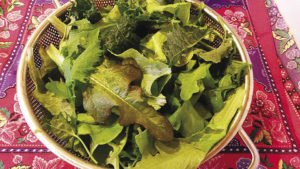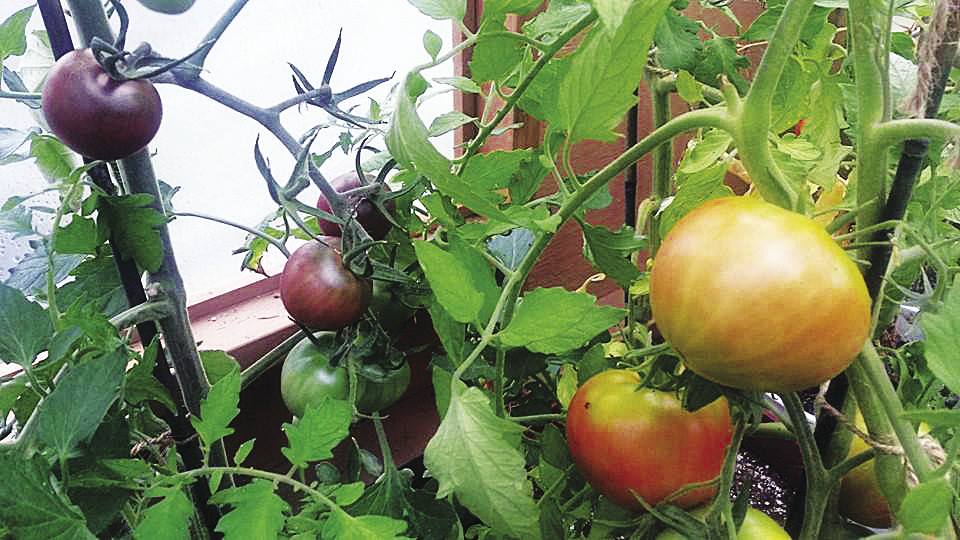Growing up with the influences of an Italian heritage, gardening played a significant role during my childhood. As a young girl, I spent summers in the backyard of my nanna and nonno’s house, catching shade behind the rows of pole beans, and watching my nanna’s homemade scare crow blow in the wind. Each year she would dress it in one of her old cotton blouses, fashioned with an aluminum pie plate for a face.
But it wasn’t until I read Michael Pollan’s keystone book, The Omnivore’s Dilemma, that I felt compelled to become more engaged with the food I consumed. His 2006 work followed the food chains that sustain our global appetite: industrial food, organic food, and what we grow and forage ourselves, from farm to table. In the process, Pollan writes a groundbreaking critique of the American way of eating that inspired many, including myself, to pursue a more local diet.
So I decided to grow a garden of my own, reviving a small, overgrown flower garden in my parents’ back yard.
It was a good place to start. A smaller patch is much easier to maintain and helps to control the overzealous tendencies of a first-time gardener—that urge to plant and grow so much more than you can handle.
Still, years later, I haven’t managed to curb the habit of planting half-a-dozen or more varieties of tomatoes, five different types of lettuces and salad greens, and more squash than I have space. Last summer I learned a hard lesson after planting my winter squash too close together and harvested just a single, small butternut.
It’s easy to get carried away with planning a garden, not only because of what vegetables you want to plant, but how many varieties there are of each.
Part of why people grow their own food is because of the choice that comes with it. Take a stroll down the produce aisles of your average grocery store and you’ll probably find one type of hothouse tomato, maybe some cherry and vine tomatoes, and typically a plum tomato, usually a Roma. Even less impressive are celery, broccoli, garlic and carrots—usually just one variety of each that have been selected more for their travel capacity than for flavour.
But open a catalogue from an heirloom seed house or visit a gardening centre, and the vegetables get a lot more exciting, offering a wide variety.
Heirloom seeds are seeds that have been saved and passed down over generations, prized for their characteristics and traits that come from a particular geographic region. Some of the most popular among gardeners are tomatoes—it’s estimated that at least 3,000 heritage varieties exist around the world in hues of yellow, orange, pink, red, brown and purple.

For example, the luminous swirls of the red and orange Sunrise Bumblebee tomato can highlight a garden salad and make a great conversation starter around the dinner table. Yet you would be hard-pressed to find a Black Plum tomato in your supermarket, an endangered Russian heirloom that creates a dark sauce and was once a staple in that country’s canning industry.
Many heirlooms have interesting background stories, like the Mortgage Lifter, developed by a West Virginia man in the 1920s. According to lore, these 2 lb. tomatoes were so successful, he paid off his home mortgage with their sales.
In an age of globalization, when foods routinely travel international borders and oceans to their destination, the variety of fruits and vegetables are selected because of their ability to keep well in transit.
In an average North American supermarket, it’s not unusual to find off-season blueberries from Chile, and certainly bananas at any time of the year. The sheer volume of produce presents a sense of abundance and choice, but it actually reflects a different reality.
The majority of bananas sold in North America are Cavendish, a cultivar that has out-competed about a thousand other varieties and maintains a stronghold in the global banana market. But when we choose to grow just one variety of banana (or anything, be it corn, canola or soy), we lose out on diversity—not only in genetics, but the flavours, stories and culinary traditions that go with it.
Since the 1990s, the Cavendish banana has been under threat by Panama disease, a leaf-wilting fungus. Monocrops—acres of the same genetic strain—are suitable for market because they ripen at the same rate and taste the same. It also means they fall prey to the same pests and diseases. In the case of the Cavendish, Panama disease has wiped out tens of thousands of acres of these plants.
Meanwhile, there’s a disturbing trend among worldwide biotechnology companies to merge with one another. Pharmaceutical giant Bayer AG is proposing a $66 billion takeover of Monsanto. It’s a move that could allow the GMO seed-production giant to capture more than 25 percent of the global seed and agrochemical market.
While supporters claim the deal would boost agricultural innovation, it also results in ownership and control of patented and genetically-modified seeds becoming concentrated in fewer corporate hands.
Now is the time to put those seeds into freshly-tilled soil. Try growing an open-pollinated heirloom variety of your favourite garden vegetable. This way, you’re taking action to support biodiversity and control your own food security by ensuring the continuation of seeds that can be saved and shared freely.




